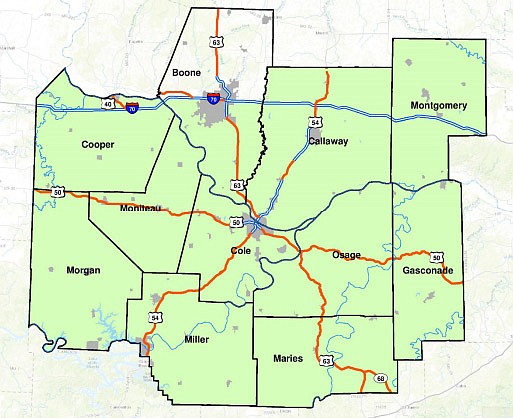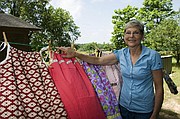Nearly one-third of local workers consider themselves underemployed.
That's one finding of the recently completed labor availability analysis of the Jefferson City Labor Basin, commissioned by the Jefferson City Area Chamber of Commerce and performed by The Docking Institute of Public Affairs.
"Underemployment" applies to individuals who possess skills and/or training levels that exceed the responsibilities of their current job, as well as those who have earned more money at a past but similar job.
The high underemployment rate, an issue in many communities, is a "two-edged sword" for the local Chamber of Commerce, said President Randy Allen: while it's bad news for currently underpaid workers, it could aid in economic development efforts.
"They're available for higher stuff," he said. "So when we go out and tell people, 'Look, we have these folks that are currently underemployed but could take a higher-level position,' on the flip side of that, that basically says that we have had at some point in time higher-level jobs that are not now in the economy."
For example, when printing company RR Donnelley closed its Jefferson City operation in 2015, its more than 400 employees, many of them highly skilled, were left to find jobs elsewhere.
"The ones that didn't retire, the ones that were trying to go back into the workforce, most of them were going down," Allen said. "They got good jobs, but not what they were used to."
Proof that skilled workers are available in the area is an important tool for marketing Mid-Missouri to site selectors who would consider locating businesses here - especially when the low unemployment rate (Cole County's was as low as 3.1 percent in May) might lead them to believe they would struggle to hire a sufficient staff.
But the unemployment rate doesn't tell the whole story, according to the study.
While Jefferson City's population hovers around 43,000, its workforce pulls from a wider surrounding area with a population of 302,500. The Jefferson City Labor Basin, as considered in the study, includes southern Boone, Callaway, Cole, Cooper, Gasconade, Maries, Miller, Moniteau, Morgan, Montgomery and Osage counties, offering a civilian labor force of 151,824 and an available labor pool of 96,618 individuals.
And 68 percent - 49,939 members - of the area's available labor pool who do not live in Cole County are willing to travel or relocate to Cole County for a job.
Plus, the study determined roughly 17,600 people in the area - 18.2 percent of the available labor pool - are considered "non-employed and interested in employment" rather than "non-employed and looking for employment," which means they're likely not included in unemployment statistics.
"That means that they have fallen off the unemployment, they are still unemployed, they still need a job, but they're not really in any of those numbers," said Missy Bonnot, director of economic development for the chamber. "So there are 17,000 people out there that aren't working, that need to work somewhere, that we really need to tap into."
An additional 18,795 individuals - 19.5 percent of the available labor pool - are listed as employed and looking for other work.
The new depth of understanding the study offers about the area's workforce will form the foundation of the Chamber of Commerce's Workforce Action Team, formed in June.
For starters, that team will assemble a Cole County Education Council with representatives from Cole County high schools to provide information on graduate and non-graduate job placement, as well as develop strategies for successful high school graduate transition to the local workforce.
From the 2016 graduating class alone, an estimated 200 Cole County high schools have no plans to attend post-secondary training or enter the military, Allen said.
"It's a captive audience," Bonnot said.
Allen added: "If they're not ready to go, what do they do? Well, they either don't do anything, which is a problem, or they're staying at McDonald's - low-skilled jobs. So if we prepare them better, if we have a program that prepares them better, then they can go to Command Web (or another local manufacturing company) and start out much higher than minimum wage and have a career. But they can't walk out of the high school with no preparation."
Eventually those efforts could extend to high schools in the extended areas of the Jefferson City Labor Basin, Allen said.
Other initiatives the Workforce Action Team has planned in light of the study results include forming an area job-posting database and an employment recruiting program marketed to regional high school graduates.
As for the 32 percent of area workers who consider themselves underemployed - and underpaid - the study doesn't exactly offer anything new.
"It just quantifies the problem," Allen said. "So now we can say for sure when Missy goes to Company X and says there are people here that are underemployed - our 3.1 percent (unemployment rate), yeah, but we have a whole bunch of middle-income people that would take the jobs that you might bring.
"We have a pool of people that can take higher-level jobs and have higher skills."
The full study is available on the Jefferson City Area Chamber of Commerce website, jcchamber.org.


